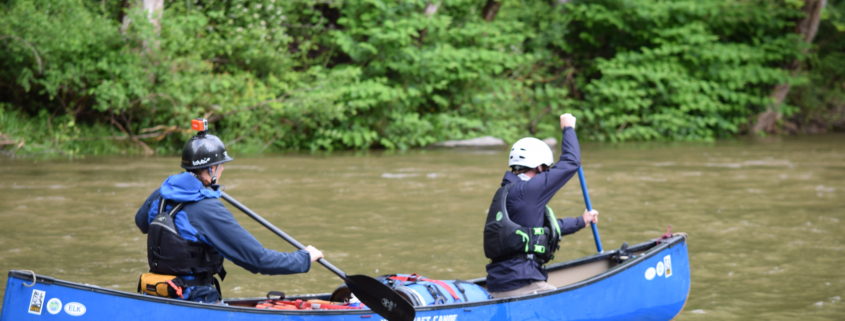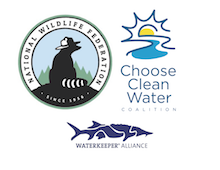
How it All Began
By Mac Thornton of Cabin John, MD and Canaan Valley, WV
Late on March 21, 1975, a very foggy, bone-chilling night, I first drove from D.C. into West Virginia’s mountains with a canoe on the top of my car. It was the beginning of a love affair with the fast, tumbling rivers and remote canyons of this state. The intimate Laurel Fork of the Cheat, and the spectacular Blackwater and Cheat Canyons became my favorites. Paddling West Virginia rivers constantly in the following years, I noticed that the conditions in and around these rivers were not fixed, but were changing. Unfortunately, most of the changes were for the worse: landowners bulldozing river beds, increased acid mine drainage and clear cutting. I got increasingly angry about these abuses. For me, the last straw came in 1988, when a proposal was floated to construct five dams in the upper Cheat River watershed. Outrageous!!! Several other paddlers felt the same way.
First challenge: the rivers of West Virginia had no voice. No recognized group had taken responsibility for speaking out for protection and restoration of our beloved mountain streams. It seemed obvious that these rivers needed a dedicated, strong advocacy group. Second challenge: there was no way a bunch of mostly Washington paddlers could found such a group; we needed to find and join with like-minded folks in West Virginia. At this point (spring, 1990), we were fortunate to come in contact with Jamie Shumway, an active environmentalist in Morgantown. Jamie immediately took the lead in building relationships with environmental organizations and leaders in the state. The West Virginia Rivers Coalition was born, consisting of national, regional and in-state conservation groups. It was the first statewide river advocacy group east of the Rockies.
Third challenge: we had no staff and were operating with a bank account of about $1000. But the following year, Pope Barrow engineered a grant of $40,000 from the Outdoor Industry Conservation Alliance (Patagonia, REI, etc.). This huge grant enabled us to hire a kid just graduating from W.V.U. to be our Executive Director: Roger Harrison. Within a couple of years, Roger matured into an articulate, polished advocate. Support started pouring in from individuals and groups. We had not imagined the depth and extent of concern for these rivers. WVRC became the second largest statewide rivers group in the USA (after California).
We presented a proposal to the U.S. Forest Service for Congressional designation of 13 streams under the Federal Wild and Scenic Rivers Act. But the W.V. Division of Natural Resources opposed the designation, fearing loss of control of their bureaucratic prerogatives on the designated streams. Also, this was just the time when the national property rights movement was gaining steam, bringing Wild and Scenic designations to a virtual halt nationwide.
WVRC changed gears, to a more wholistic approach to river conservation. We advocated a watershed-based analysis and prioritization, and for example, hosted the Appalachian Rivers and Watershed Conference in June, 1994, with attendees from all over the East. Based on our example, other statewide groups were formed, such as New York Rivers United. With the assistance of long-time environmental advocates such as Don Garvin, we successfully inserted the interests of W.V. rivers in many political and regulatory issues over the years.
Today’s WVRC continues to be the voice of West Virginia’s legacy of unique and amazing streams. The challenges continue against the powerful forces supporting fracking, mountaintop removal, industrial chicken waste disposal, etc, etc. We must ensure the voice of the rivers remains firm and persistent.
West Virginia Rivers Coalition: An Organization is Born
By Jamie Shumway, Morgantown, WV
The West Virginia Rivers Coalition was an idea born at a meeting of like-minded individuals of the West Virginia Chapter of the Sierra Club (WVSC) and the American Whitewater Affiliation (AWA) in the spring of 1990 at my home. Mac Thornton ran the meeting and outlined a plan to form an organization to save and protect the outstanding rivers and streams in West Virginia. He envisioned a statewide organization to promote the preservation, restoration, and enhancement of West Virginia’s beautiful rivers and streams so that they could be enjoyed by present and future generations.
As a whitewater kayaker, canoeist, and environmentalist, I was inspired by Mac Thornton’s vision and wanted to be involved in the work required to accomplish the goals of his plan. Consequently, a small working group was formed to seek funding for this new state-wide river conservation organization. I wrote a grant to the national Sierra Club, and as a new river organization we also received funding from American Rivers, a national river conservation organization. Soon after, we received a grant from the Virginia Environmental Endowment. With these funds, we hired our first executive director, Roger Harrison, and established a store-front office in Buckhannon WV for the fledgling coalition.
The initial goal of the West Virginia Rivers Coalition was to seek designation and corresponding protection for West Virginia’s exceptional rivers and streams under the national Wild and Scenic Rivers Act. At that time, significant descriptions of the potential candidate rivers needed to be completed. Roger Harrison and a small support staff spent countless hours writing documents describing the rivers that should be designated.
One of the primary challenges was to work with the West Virginia Department of Natural Resources (DNR). Unfortunately, at that time, the DNR leadership saw “wild and scenic” river designation as a threat to their management of the rivers in West Virginia because of the potential conflict with funding received by the fish and wildlife division of the DNR. Consequently, in these early years, it was a constant battle with state government to gain protection for the potential candidate rivers in West Virginia.
Despite these early continual setbacks from the state government agencies, the work of the West Virginia Rivers Coalition proceeded by building community and citizen support for river conservation in West Virginia. Today, over 20 years later, the West Virginia Rivers Coalition continues to advocate for river protection and enhancement, by steadfastly following its original mission “to seek the conservation and restoration of West Virginia’s exceptional rivers and streams”. As a founding board member of the West Virginia Rivers Coalition, I am proud of what the West Virginia Rivers Coalition has accomplished, and I look forward to its bright and continuing future.


